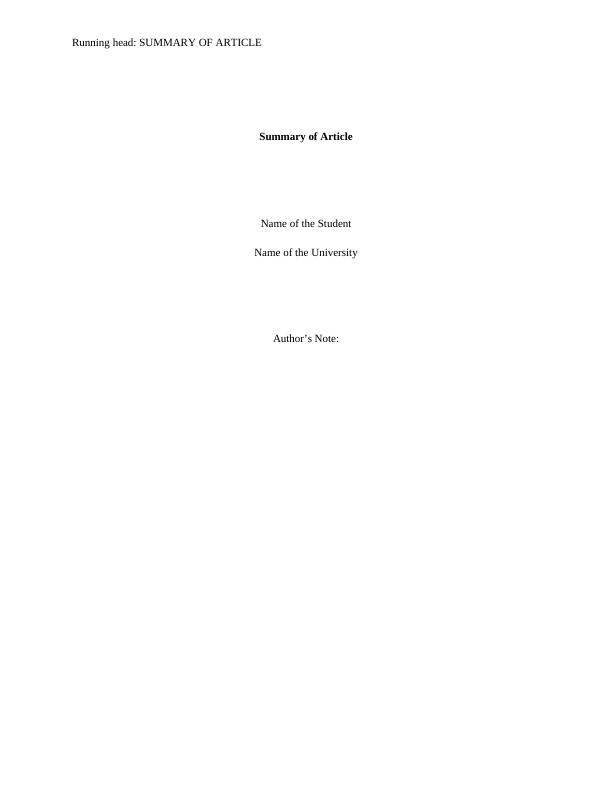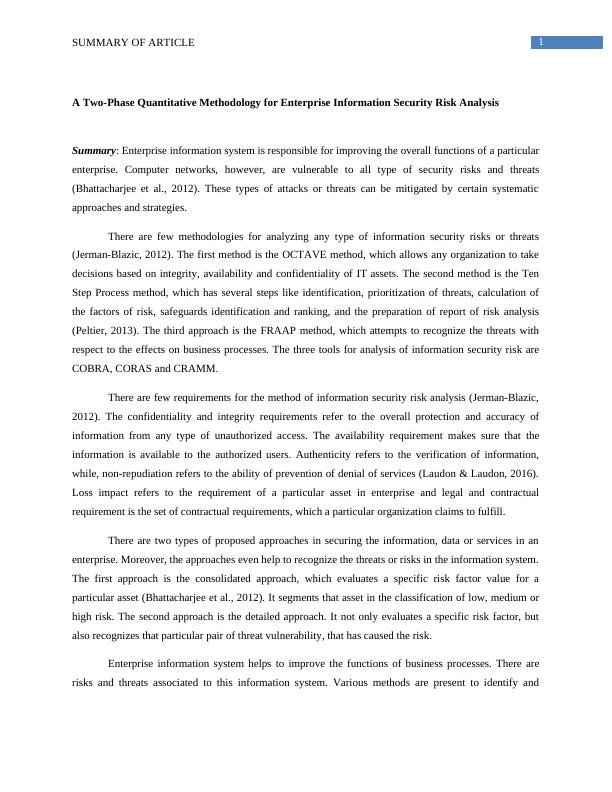Ask a question from expert
Enterprise Information Security Risk Analysis
4 Pages623 Words221 Views
Added on 2020-05-11
Enterprise Information Security Risk Analysis
Added on 2020-05-11
BookmarkShareRelated Documents
End of preview
Want to access all the pages? Upload your documents or become a member.
ITC596 - Risk Management Assignment
|4
|619
|73
Security Risk Analysis and Management: A Comprehensive Guide
|20
|2542
|272
Identification of the four Vulnerabilities for the Various Assets
|12
|2717
|30
Agency Risk Assessment 2022
|11
|2651
|19
Security and Risk Management: Amcor
|15
|3379
|242
Cybersecurity Threats and Anti-Spam 3 CONCLUSIONS 4 INTRODUCTION Cybersecurity Threats and Anti-Spam 3 CONCLUSION 3 REFERENCES 4 INTRODUCTION Cybersecurity Threats and Anti-Spam 3 CONCLUSION 3 REFEREN
|7
|1670
|122

